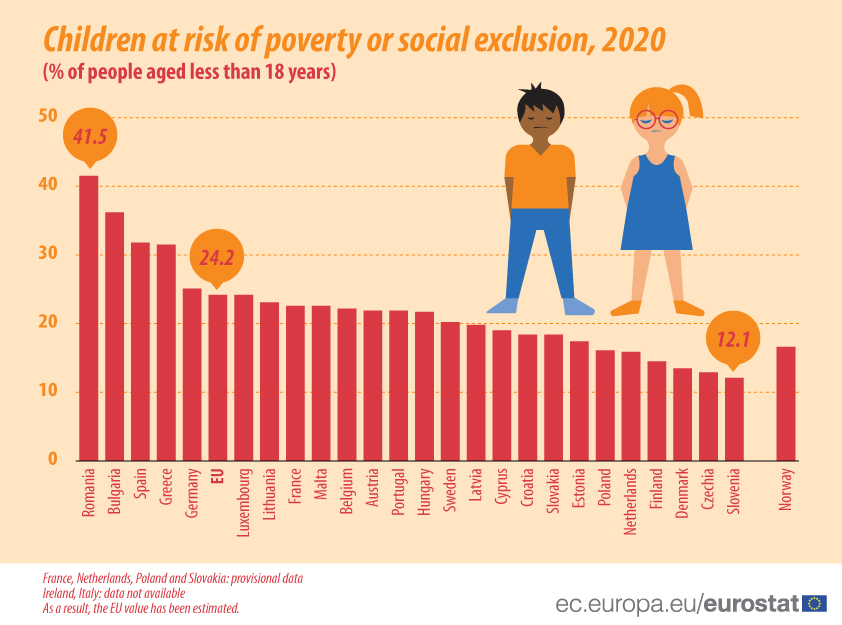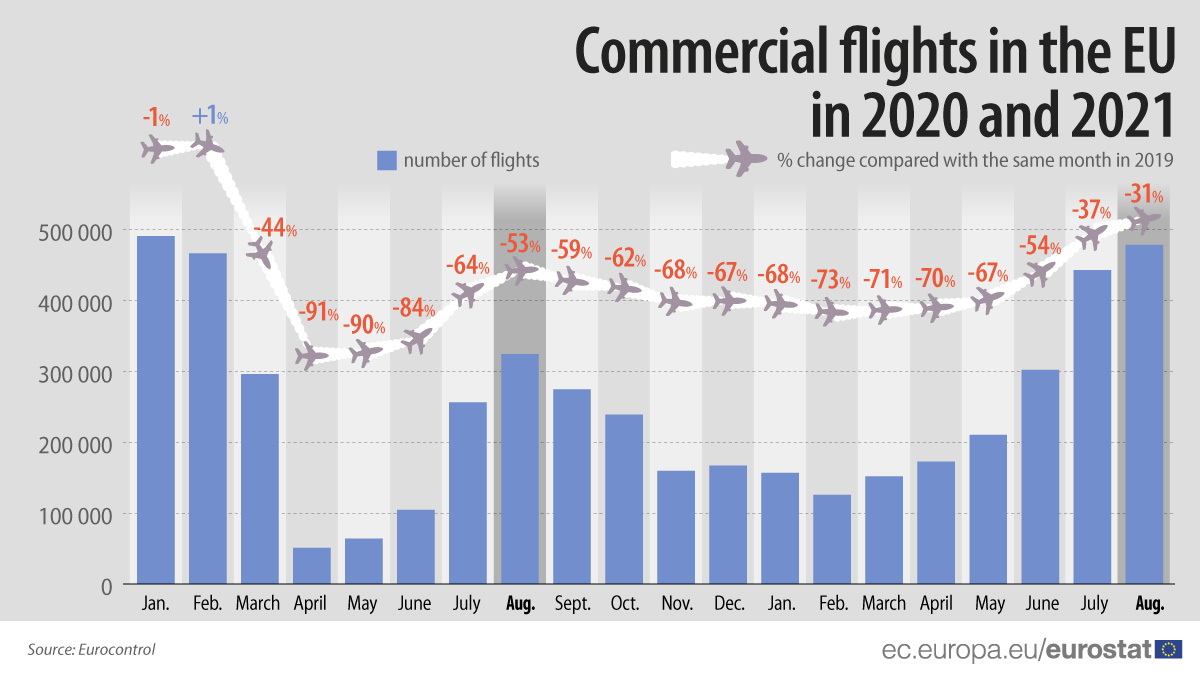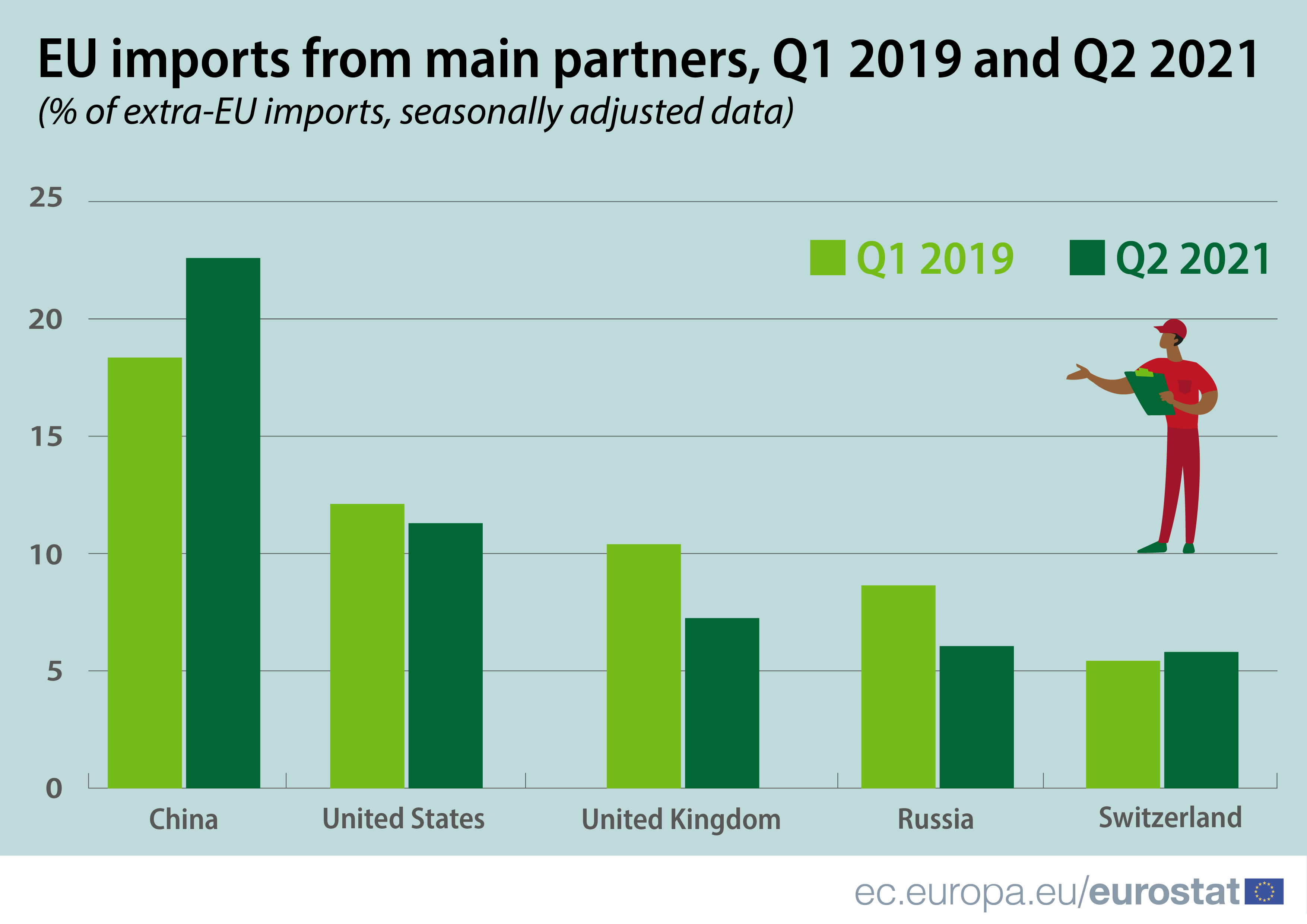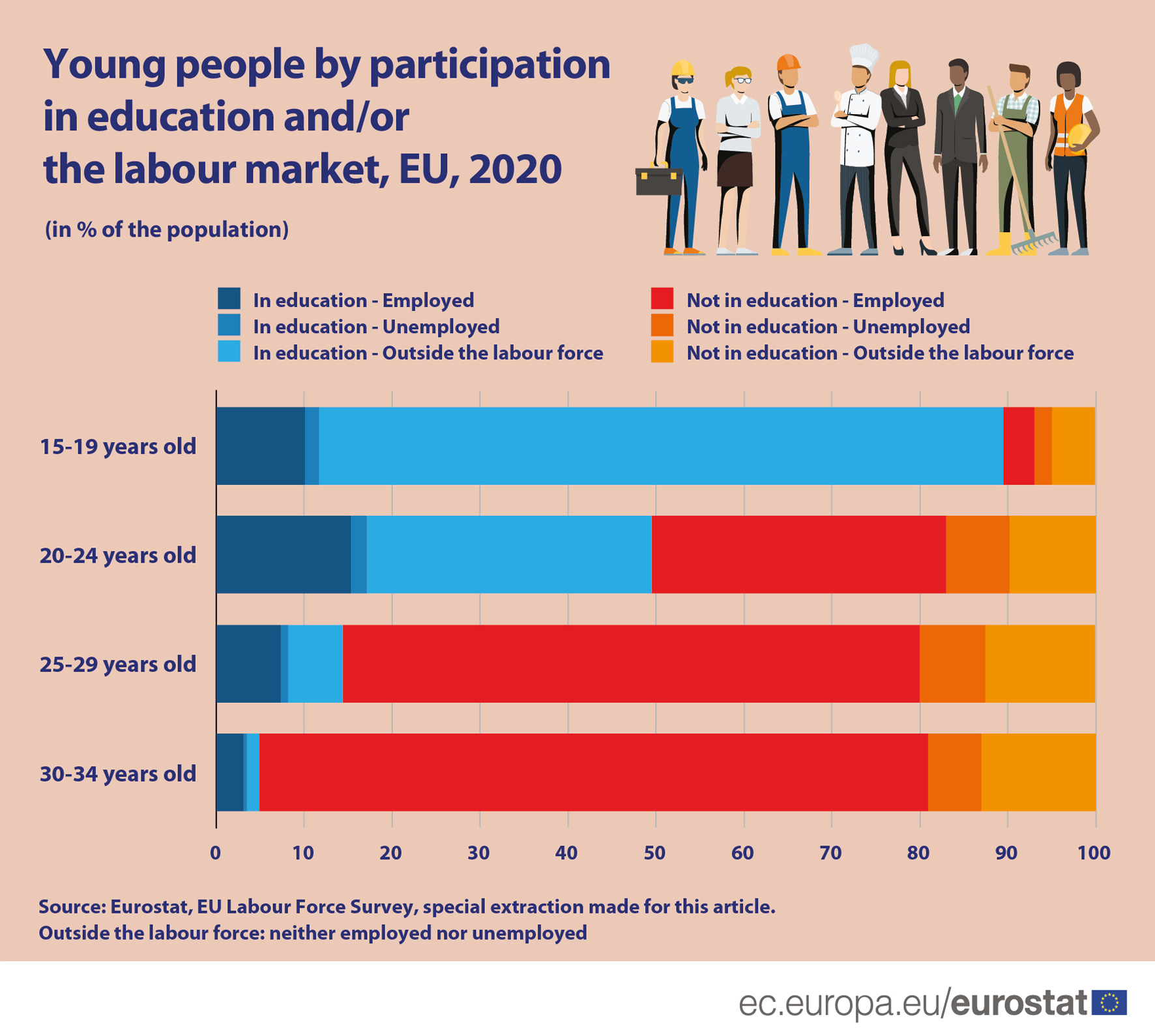In 2020, 24.2% of children (less than 18 years old) in the EU were at risk of poverty or social exclusion compared with 21.7% of adults (18–64) and 20.4% of older people (65 or over).
Statistics
On the occasion of the International Day for the Eradication of Poverty, which takes place each year on 17 October, Eurostat has updated its data visualisation on ‘At risk of poverty and social exc
In 2019, there were 5.2 million teachers employed in primary, lower secondary and upper secondary education. This marked a 5% increase compared with 2013 (5.0 million).
The Sustainable Development Goal (SDG) 12 'Responsible consumption and production' calls for action on all fronts: adoption of sustainable practices by businesses, promotion of sustainable procurem
In 2019 English was the most commonly studied foreign language at upper secondary general education level in the EU, with 96% of students learning it.
The Sustainable Development Goal (SDG) 5 'Gender equality' aims to end all forms of discrimination, violence, and any harmful practices against women and girls.
In August 2021, the number of commercial flights in the EU increased by 48% compared with August 2020. This is still well below the pre-pandemic levels (-31% compared with August 2019).
In Q2 2020, the EU’s largest trade partner in goods was China, overtaking the United States.
In 2019, there were 2.0 million teachers (85% women, 15% men) and 24.5 million pupils at the primary education level in the EU Member States.
In 2020, in the EU, 9 in 10 people aged 15-19 years were still in education (89.5%).









